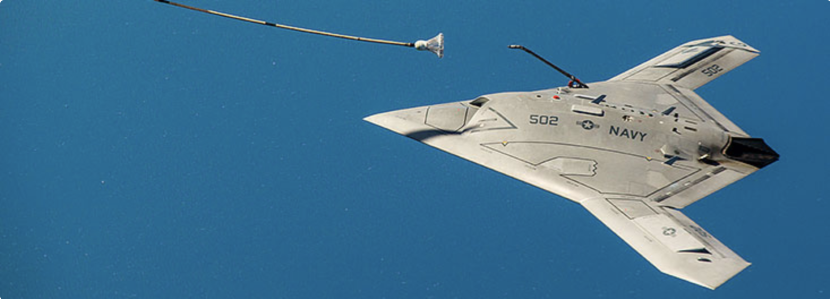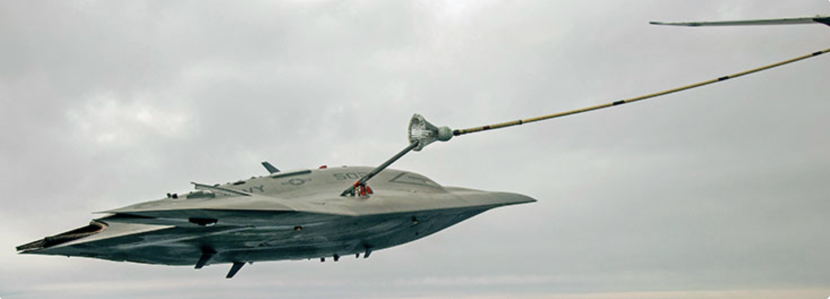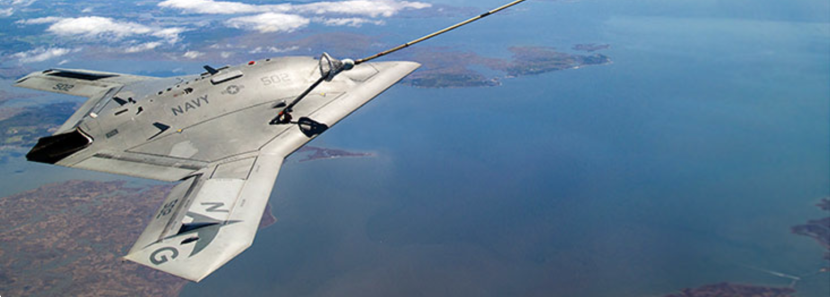X-47B by Northrop Grumman is the first unmanned aircraft that can refuel in-flight!
 Image Credits: Northrop Grumman
Image Credits: Northrop Grumman
In 2015, the US Navy put off the X-47B by Northrop Grumman despite the potential it held, but then they took it up again.
Contents
Here’s what happened
In 2013, the US Navy was working X-47B by Northrop Grumman drone. This drone was the first one to both – launch and land, on an aircraft carrier deck. It was deemed a great success, thanks to its efficiency. Designed as two prototypes, the X-47B was to be included as part of the Navy’s MQ-25A Stingray Program, if successful.
The X-47B successfully went through 37 landings on the U.S. aircraft carriers, multiple catapult launches, multiple arrested landings and some autonomous wave-offs and a series of other tests, and the aircraft successfully completed almost all of them. Despite the continuous positive growth, and 80% remaining expected life of the two prototypes produced, two years later, in 2015, the U.S. Navy decided to say goodbye to the drones.
The X-47B was better than the other prototype, and the only problem with this drone was that it was having some issues with corrosion on its exposed surfaces when it came in contact with the sea water; this was a fairly commonly known problem among ships and submarines so, it wasn’t that major of an issue. There was no apparent major reason for dropping it, and to simply bid farewell just like that.

The next year, in 2016, the Navy, again, started considering and then, working on the MQ-25A Stingray Program. They awarded Northrop Grumman, Boeing, General Atomics and Lockheed Martin R&D (Research and Development) contracts for risk reduction goals, mainly.
Northrop Grumman chose to work on the initial plan, the X-47B, for the MQ-25A Program.
So, what really is the X-47B by Northrop Grumman UAV?
The X-47B is a UCAS or an Unmanned Combat Air System. It is a semi-autonomous combat aircraft that officially started working with the U.S Navy in 2019.
The X-47B by Northrop Grumman was designed to find a one drone solution that would function for both the U.S. Navy and the Army; this program was called the UCAS-D (Unmanned Combat Air System-Demonstration) which contained the sub programme J-UCAS (Joint-Unmanned Combat Air System) program. The program was first initiated in 2000.
When developed, the X-47B was created as a pair of two prototypes; the X-47A (aka the Pegasus) and the X-47B. The X-47A was a smaller version compared to the X-47B, and the X-47B was much better in terms of a lot of features.
This is what makes the X-47B by Northrop Grummandrone a breakthrough!
Being an unmanned combat vehicle, the X-47B offers great opportunities for risky missions and would also guarantee a good and winning interaction. Some of the highlight properties of this aircraft (discussed further on) make it genuinely remarkable to send on missions that are so long that we couldn’t ever imagine sending unmanned crafts on them in the past. This offers a technology which would change the game for combat aircrafts.
The X-47B, on 14th May 2013, became the first drone aircraft to be successfully catapulted from an aircraft carrier’s deck. This was the USS George H.W. Bush (CVN-77) located on the Atlantic Ocean.
Another one of the X-47B’s achievements is that it was the first ever unmanned air vehicle in history that completed a totally autonomous in-flight refueling. This is also a major breakthrough as it offers longer range missions that won’t be disturbed by pilot or fuel issues.
The perfect design to fly, sky high…
The X-47B is of the size of a strike fighter and is a full weight aircraft with a modern and strikingly triangular structure. The shape is perfectly and very staunchly streamlined, making it the perfect structure for travel in both marine and land based operations. The design makes the X-47B a super speed drone, and makes it a true flying structure without any vertical external installations.
The aircraft is 10.4 feet in height, 38 feet in length and has a wingspan of 62 feet. The wings when folded are 30.9 feet across. In terms of the external structure, the major features of the X-47B are the folding wings, for storage, and an undercarriage. The undercarriage is retractable and is built as two separate single wheeled main legs come together and get joined by one twin-wheeled nose leg.

Northrop Grumman has also greatly worked on the corrosion issue and it is essentially solved now.
Since the X-47B does not require a pilot, it features great inside space for housing of all kinds of firepower, mission equipment, avionics, fuel tanks etc.
Northrop Grumman is also working on installations of two internal weapon bays with around 4,500 lbs carriage of ordnance as guided munitions.
The X-47B Systematics
The X-47B is an autonomous vehicle with a featured smart control system, but also requires a mission operator. It has multiple sensors installed; these include electro-optics (EO), infrared (IR), synthetic aperture radar (SAR), inverse SAR, ground moving target indicator (GMTI), electronic support measures (ESM) and maritime moving target indicator (MMTI) sensors. The aircraft requires pre-programming of its flight pathway and uses a vision based hybrid GPS for navigation.
X-47B and its high subsonic range speed
The X-47B has a Pratt & Whitney F100-220U turbofan engine and exhaust system. The engine offers the aircraft a cruising speed of 685 miles per hour and an operational range, in an excess of, 2,100 nautical miles. The maximum cruise altitude is 40,000 feet.
The X-47B by Northrop Grumman top speed is a maximum high subsonic range speed of a more than 2,100 nautical miles (or almost 3,900kms). At this high subsonic speed, the aircraft can travel for more than six hours without requiring refueling, and covering the said 3900kms.

The debut flight
The first and debut flight of the aircraft was on the 4th of February in 2011. It was at the Edwards Air Force Base in California. The X-47B got into position, took off, flew and landed all on its own. This flight awarded it the designation of the AV-1 or the Air Vehicle 1.
Other features, and the tests performed….
Through a series of experiments and tests, the X-47B has proven itself to be of great worth. These tests performed on the X-47B are of great value owing to the kind of aircraft that the X-47B is.
The X-47B by Northrop Grumman has been tested for electronic warfare or EW compatibility systems through high intensity electromagnetic interference tests. It has been successfully lifted dock side by a crane at the U.S. Naval Ship titled USS Harry S. Truman (CVN-75) at the Naval Station Norfolk, Virginia. This was for its carrier-based assessments. These covered numerous experiments on the communication systems, movements onboard and movements across hangar bay and flight decks. These and other carrier-based assessments reflected the X-47B as a great alternative for manned aircrafts with similar purposes as it offers similar functionalities while being unmanned.